You must have come here to ask about the clear, tiny worms that you may have recently spotted in the soil of your garden or potted plants. We assure you that you have come to the right place! Let’s talk about those tiny clear worms in soil.
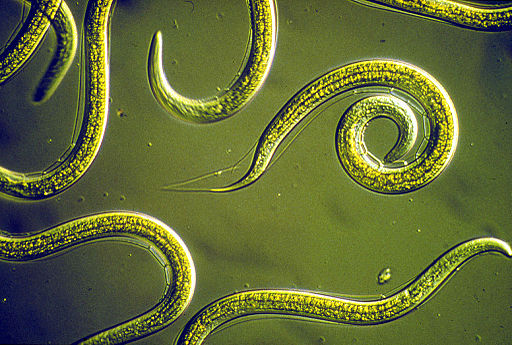
There are many different pests, but if you see clear worms in your soil, you’ll definitely be concerned.
Any gardener will tell you that worms in the soil are one of the most frustrating things they have to deal with, but we want to reassure you that not all worms are detrimental to the soil. Some worms are, in fact, vital to the well-being of your soil and plants.
For instance, earthworms are beneficial because they aerate the soil and break down dead organic debris. On the other hand, there are harmful worms that can cause a lot of damage to the roots and seedlings of your plants.
Most of the tiny transparent worms in the soil are microscopic nematodes, which can be divided into four categories: bacterivorous nematodes, fungivorous nematodes, omnivorous nematodes, and predatory nematodes. However, they might also be fungus gnat larvae or pot worms.
Continue reading …you will learn a great deal here about the various tiny transparent soil worms that exist and how to deal with them!
How To Identify The Worms In The Soil
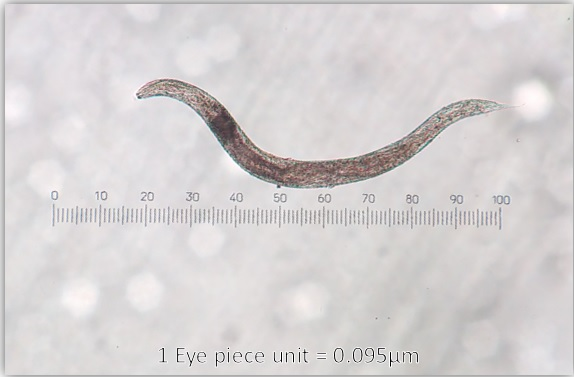
When there are too many transparent worms in the soil, it could be a sign of trouble.
It is essential to determine the worm species in your garden to decide whether or not you should allow it to remain in the soil or get rid of it. The tiny clear worms in garden soil are usually nematodes and come in a wide variety, so let’s talk about those first.
Nematodes In The Soil
Nematodes are a type of roundworm that have been present for more than 400 million years and are classified within the phylum Nematoda. These microscopic nematodes primarily consume bacteria, fungi, and other free-living nematodes. However, certain species are also capable of causing damage to plants and seedlings by feeding on plant roots.
Nematodes are characterized chiefly by their diminutive size and colorless bodies, which set them apart from other types of worms. It might be required to use a microscope or a magnifying glass to observe certain types of nematodes because of their tiny size.
As already stated, nematodes come in a wide variety, and we will do our best to help you sort through them all. However, since these worms come in a wide variety of shapes and sizes, only a trained expert can correctly identify the type of worms that are living in your lawn soil or the potted plants in your home.
Related: How To Get Rid Of Tiny White Bugs On Eggplants For Good?
Free Living Nematodes
Beneficial nematodes are worms that live in free-living environments and consume bacteria and fungi as their food source. Their very existence in your garden can provide a layer of defense against various diseases and pests.
By virtue of their role in the decomposition process, these nematodes contribute to an increased level of naturally existing nutrients in the soil, making them readily accessible to your plants. One of the numerous factors that may have led to the success of the flowers in your yard is the presence of free-living nematodes.
Free-living nematodes can be further classified into Bacterivorous Nematodes, Fungivorous Nematodes, Predatory Nematodes, and Omnivorous Nematodes.
Bacterivorous Nematodes
Bacterivorous nematodes eat on bacteria present in the soil through the hollow tube-shaped structure called the stoma. They are sometimes referred to as the “grazers of soil bacteria” and are responsible for regulating the growth of bacteria in the soil.
When these organisms consume bacteria, they release nitrogen from the bacteria cells in the form of ammonium. The soil and plants can then use this ammonium as a natural fertilizer. Nematodes such as Rhabditis, Chiloplacus symmetricus, and Aphelenchus avenae are all examples of bacteria-eating nematodes.
Fungivorous Nematodes
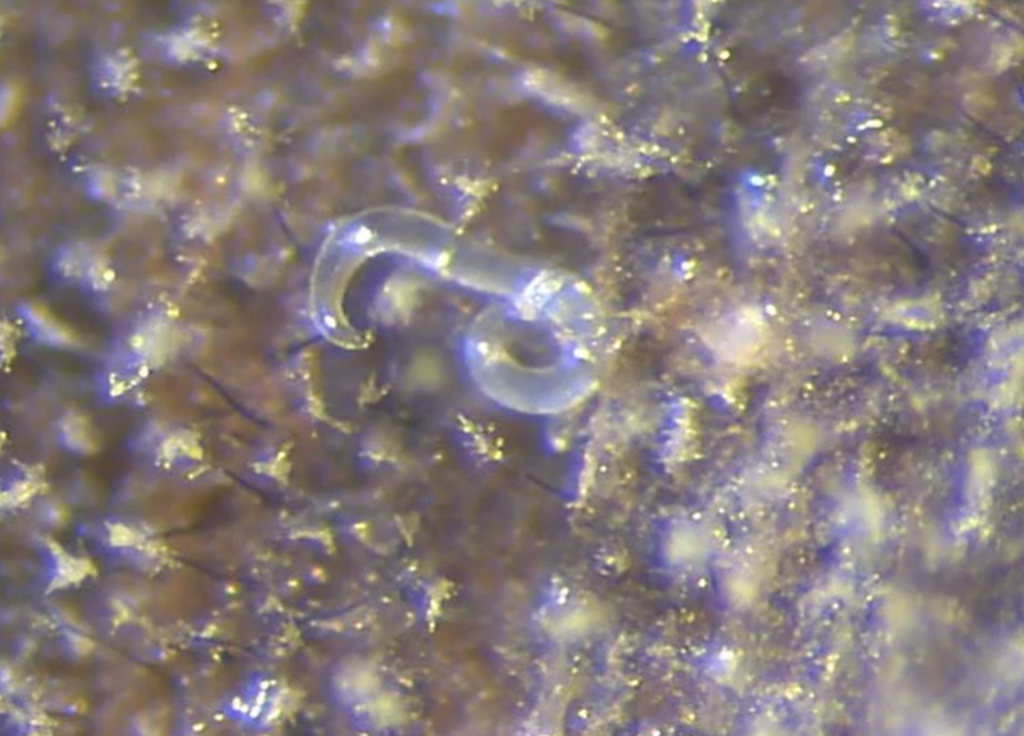
These fungus-eating worms aid in the decomposition of organic materials in the soil.
Fungivorous nematodes feed primarily on fungi by dissolving their cell wall and extracting nutrients. These fungus-eating worms contribute to the decomposition of organic materials in a manner that is comparable to that of nematodes that feed on bacteria.
When these worms consume fungi, they release nitrogen in the form of ammonium, just like certain bacteria and bacteria-eating nematodes do, enriching the soil.
Nematodes such as Anguindiae, Aphelenchus avenae, and Scottnema lindsayae are some of the most common fungivorous nematodes.
Omnivorous Nematodes
The omnivorous nematodes consume different forms of organic life (plant and animal) in the soil, including other species of nematodes. These nematodes are an essential component of the soil food chain because they reduce the number of other types of soil-dwelling pests.
Their food source differs widely from species to species and depends heavily on their life stage. Dorylaimidae, Aporcelaimidae, and Actinolaimus tripapillatus are some families of nematodes that consume both plant and animal matter in their diets.
Predatory Nematodes
Predatory nematodes consume other organisms, such as insects, other nematodes, and protozoa. They can either engulf their victim and then digest it or weaken their defenses and bring down their prey with the help of other giant creatures.
Populations of harmful nematodes and other similar-sized organisms, including insects, can be reduced with the help of predatory nematodes. Some examples of predatory nematodes are Heterorhabditis bacteriophora, Phasmarhabditis Hermaphrodita, and Steinernema.
Related: How To Get Rid Of Thrips On Orchids For Good? The Ultimate Guide
Insect-Parasitic Nematodes
This subgroup of nematodes feeds on several kinds of insects. Insect-parasitic nematodes kill their hosts, primarily insects that destroy garden vegetation. If these nematodes are not already present in the soil where your lawn and potted plants are located, you should consider purchasing them either online or through a nursery in the vicinity.
Then, incorporate them into the soil. These nematodes do not pose any threat to the health of your plants or animals, whether they are domestic or wild.
Plant-Parasitic Nematodes
Here come the bad guys! Plant-parasitic nematodes are undesirable in the garden because they rely on your plants to thrive and proliferate. These nematodes will even kill the plants if proper precautions are not taken. Root-knot nematode is one such nematode responsible for damaging plants’ roots and may lead to stunted growth or death.
So, if you notice transparent, small worms in your soil and your plants are turning yellow and wilted, root-knot nematodes may be to blame.
Pot Worms In The Soil

The encyraeids, aka pot worms, can be recognized by their white, wriggling bodies and large numbers.
Nematodes are not always the microscopic, transparent worms that can be seen in your garden’s soil or the potted plants in your home. For instance, if the worms you encounter are translucent, range in size from 5 to 15 millimeters, and are similar in appearance to lesser kinds of earthworms, then you are most likely looking at pot worms.
They are a natural part of compost soil, and the presence of these organisms in the ground does not affect plants. Pot worms break down dead organic debris in the soil, increasing nutrient content and aeration. It would be unwise to eradicate pot worms from the ground because of their beneficial effect on the environment.
Fungus Gnat Larvae
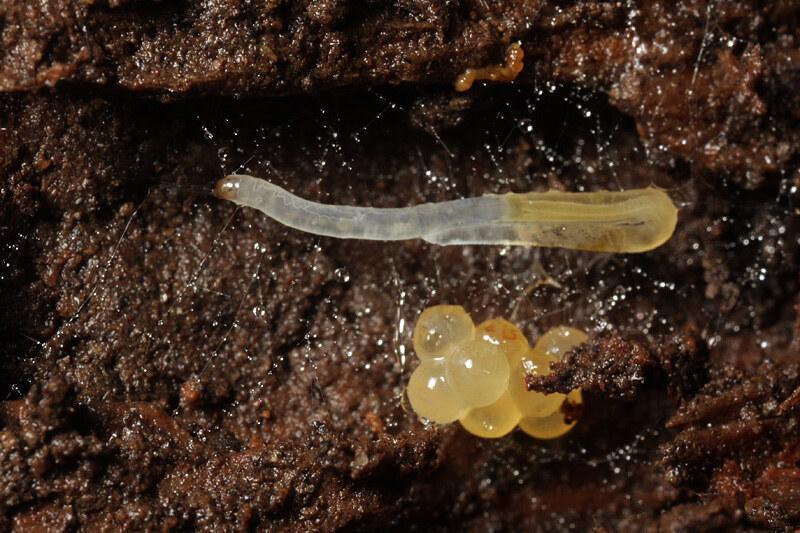
Fungus gnats infest soil, potting mix, other containers, and organic decomposition.
It’s not always worms, even if they look like little translucent worms. They could also be the larvae of fungus gnats.
Fungus gnats lay whitish eggs in the soil. When the eggs hatch, the larvae that develop from them look like tiny worms. The body of these larvae range from white to transparent, and their heads have a dark brown color.
Fungus gnat larvae are parasitic in nature and feed on the plant roots and stem. This feeding behavior continues until the larvae become adult flies. The larvae of the fungus gnat could be eradicated with the use of either chemical or natural treatments.
Where Do Tiny Clear Worms In Soil Come From?
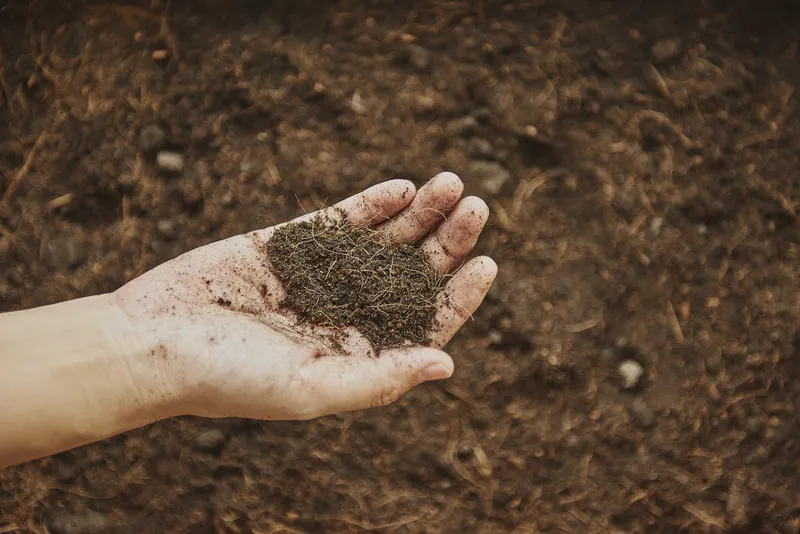
There is no need to worry if you see tiny, transparent worms in your garden soil. They occur naturally!
Here is why you have tiny clear worms in your garden soil:
Nematodes
Worms are just one of many animal and plant species that thrive in the natural dirt. Most soils have nematodes as a part of their natural ecosystem.
Pot Worm
The compost piles are the most common places to find pot worms because that is where they undertake their most important work of the decomposing organic matter. When we use compost that contains pot worms as a fertilizer on your lawn, the pot worms are transferred from the compost to the soil on your grass.
Fungus Gnat Larvae
The female fungus gnat flies deposit their eggs in the ground where they feed. The larvae, which resemble worms, are released when the eggs hatch. If you move this dirt around and mix it with soil from other plants, the larvae could move to different parts of your lawn. Before maturing into adults, these worm-like larvae must first develop in the ground.
How To Control Tiny Clear Worms In The Soil?
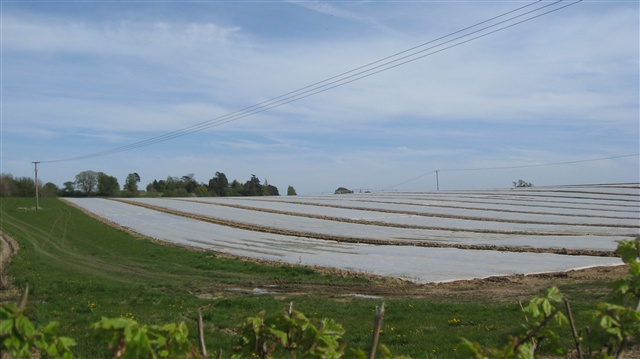
Soil solarization is a non-chemical method for controlling soil-borne pests and weeds.
Tiny clear worms with a parasitic lifestyle can severely damage your garden. They are most commonly found in the soil close to the plant’s roots. Therefore, it is up to you to keep them in check! The easiest way to prevent these worms from spreading and causing harm in the spoil is to rip out affected plants by the roots or use pesticides.
Solarizing your soil is yet another efficient method for eliminating the worms from your garden. In solarization, the area of soil is covered with a sheet of clear plastic so that the heat from the sun will be retained.
When this is done, the temperature of the soil quickly rises to considerably higher levels, eliminating the majority of the organisms that were previously living in that soil. The soil also loses its moisture when exposed to light, killing worms, fungi, and other unwanted critters.
If you have noticed very small white worms in your soil, they are either pot worms, nematodes, or larvae of fungus gnats. Nematodes are the most common of the three. Some pose no threat to the plants in any way, while others are capable of causing the plants’ death.
For example, some of these tiny transparent worms feed on the organic matter in the soil, and when they do so, they often do not leave enough for your plant, which means that your plant will suffer. However, do not worry! It is simple to get rid of them, and you can take measures to avoid further infestations.
Related: How To Get Rid Of Spider Eggs From Plant Soil For Good? The Ultimate Guide
Frequently Asked Questions (FAQs)
What are the tiny white worms in the soil?
If you discover little white worms in your soil, they are either pot worms or fungus gnat larvae. These organisms consume the organic matter in the ground and, as a result, frequently leave insufficient nutrients for your plant, causing it to suffer. However, if the worms are whitish and translucent, they are probably nematodes.
Are baby worms translucent?
Tiny earthworms start as transparent or opaque but quickly turn a vibrant red as they mature. Some of the tiniest ones are so clear that their colors are hard to detect. However, garden soil’s transparent, small worms aren’t always baby earthworms. They could also be pot worms, nematodes, or fungus gnat larvae.
How do I get rid of tiny white worms in my soil?
Remove the topsoil or start over with new soil if you have a problem with little clear worms. Tiny, transparent worms in the garden soil can also be controlled using biological means. However, if there are too many of them and the infestation is likely to go out of hand, you can use chemical pesticides too.
Are clear worms poisonous?
While most transparent worms are harmless, a few species are hazardous to the well-being of plants. For instance, plant-parasitic nematodes, often known as PPNs, are detrimental to plants because they are capable of causing a variety of plant diseases, including root knots and cysts.
Are white worms harmful?
There is a great deal of misunderstanding regarding pot worms, which are members of the family Enchytraeidae and are classified as worms. White worms are not responsible for a substantial amount of damage. However, if they are allowed to proliferate for a lengthy period of time, it is possible that they will kill your plants.
Is it OK to have worms in potted plants?
Earthworms are helpful at conditioning soil and improving drainage. However, unlike ground soil or vermicompost, the soil in a potted plant’s container might not provide enough nutrition for earthworms to thrive. So, they should not be added to the potted plants. If added to potted plants, they will either perish or crawl out of there.
Where do small white worms come from?
Most likely, the white worms climbing your home’s walls are fly larvae. They could, however, be moth larvae or pinworms as well. Pinworms, often called threadworms, are microscopic worms that spread a disease called enterobiasis. In contrast, maggot larvae thrive in filth and can cause serious health problems for anyone who eats tainted food.
Sources For Further Reading
Can’t Live Without Me | The Adventures of Herman the Worm | U of I Extension. (2022). Retrieved 21 September 2022, from https://web.extension.illinois.edu/worms/live/
Are soil nematodes beneficial or harmful? (2013). Retrieved 21 September 2022, from https://www.canr.msu.edu/news/are_soil_nematodes_beneficial_or_harmful
Earthworms can be an indicator of soil health. (2016). Retrieved 21 September 2022, from https://www.canr.msu.edu/news/earthworms_can_be_an_indicator_of_soil_health
Editor’s Recommendations
How To Get Rid Of Fungus Gnats For Good | The Ultimate Guide
Aphids Vs. Thrips | Which Is Worse And How You Can Get Rid Of Them?
What Are These Orange Bugs On My Milkweed Plants? Harmful Or Beneficial?







